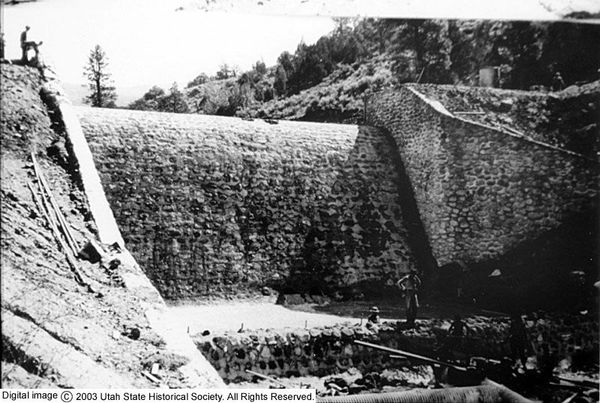Dublin Core
Title
Description
In the 1930s, there was no shortage of work to be done on Utah's infrastructure. Federal agencies had plans at the ready but lacked funding to bring those projects to life. In response to the Great Depression, however, US President Franklin D. Roosevelt's New Deal introduced a raft of social programs funded through deficit spending. The Civilian Conservation Corps -- or CCC -- was one such program that put people to work while investing in needed infrastructure. The CCC employed thousands of young men and in Utah alone, constructed 423 large dams and 792 springs, water-holes, and small reservoirs throughout the state. More than just a make-work program, the CCC addressed water needs in neglected parts of rural Utah.
CCC workers were all young men between the ages of 18 and 25. Most lacked specialized skills, but the Corps gave them training. Although many of the projects they constructed were crude, enrollees also helped build some of the largest water projects in the state. They mostly did odd jobs, such as “riprapping,” which is placing rock along the surface of the dam to stabilize the wall and prevent erosion. Among the site managers and more specialized workers, these men earned a reputation for doing quality work despite their inexperience.
CCC workers built “check dams'' for flood control, and reservoirs to water herds. One such project opened up new range for grazing in the Mineral Mountains west of Beaver. By damming a natural granite basin below a spring, the CCC made a small reservoir that could hold 576,000 gallons. Enrollees then built a pipeline to the valley floor to fill troughs for sheep and cattle.
Work conditions were challenging and sometimes dangerous. Enrollees weathered desert heat in the summer and snowstorms in the winter, at times fighting off rodents and even a suffocating swarm of Mormon crickets. But these young men had jobs, and the water that came from their efforts was put to good use. The CCC likely played a role in convincing Utahns of the value of the New Deal. Utah’s leaders tend to be skeptical of federal government spending, but Utahns enthusiastically voted to re-elect President Roosevelt.
Creator
Source
Image: Dam built in the 1930s by the Civilian Conservation Corps, with workers present. The majority of enrollees who worked in the state were from Utah, though there were thousands who came from out of state. Courtesy Utah State Historical Society.
_______________
See Kenneth W. Baldridge, “Reclamation Work of the Civilian Conservation Corps, 1933–1942,” Utah Historical Quarterly 39 no 3 (1971): 265–285; Kenneth W. Baldridge, “The Civilian Conservation Corps” in Utah History Encyclopedia (Salt Lake City: University of Utah Press, 1994); Brian Q. Cannon, “Mormons and the New Deal: The 1936 Presidential Election in Utah,” Utah Historical Quarterly 67 no 1 (1999): 6-24.

